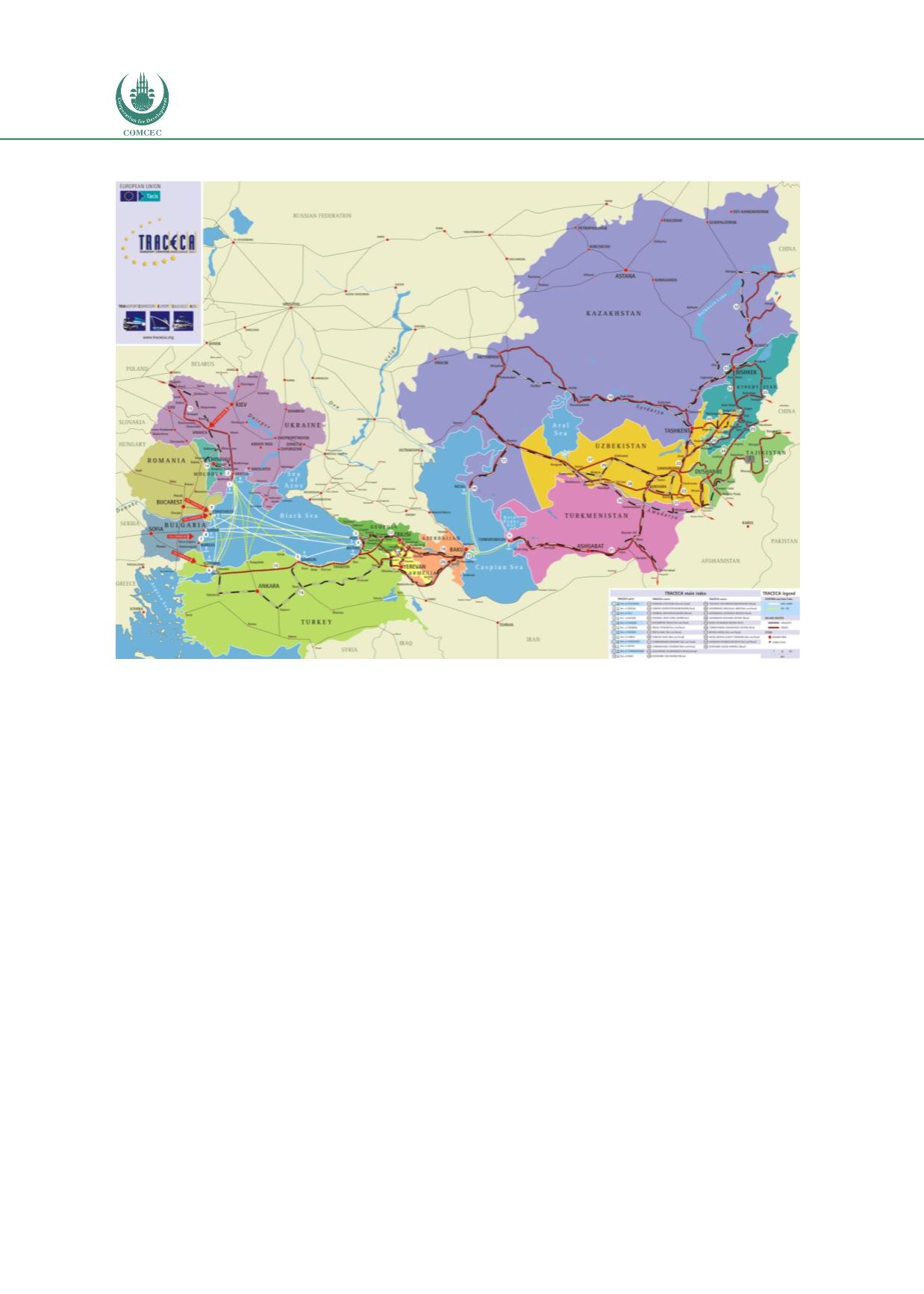

Improving Transnational Transport Corridors
In the OIC Member Countries: Concepts and Cases
72
Figure 26: TRACECA Freight Transport Network as of 2 November 2011
Source: TRACECA (2017).
TRACECA facilitates trade and secures transport capacity and deep-water port access to land-
locked countries (TRACECA, 2003b), but it also reflects EU’s geopolitical ambitions by creating
an alternative to transiting Russia for east-west transport on the Eurasian continent and tying
the included countries politically firmer to the EU. Two TRACECA member states, Bulgaria and
Romania, are now also members of the EU. The sphere of influence of TRACECA relates
strongly to the Black Sea and Caspian Sea with EU aspirations to connect the Trans-European
Networks for Transport (TEN-T) eastward as an element of the revival of the ancient Silk
Route (Dekanozishvili, 2004, Acar and Gürol, 2016) and the Byzantine maritime links
(Lyratzopouoou and Zarotiadis, 2014).
In particular, the routes T19-T22 and T24 in TRACECA’s central parts are studied in detail. T19
is a 1700 km rail link connecting Istanbul with Gumri in Armenia, although the land border
between Turkey and Armenia is closed, but it can also serve Georgia with a new link through
Kars in eastern Turkey. T20 connects Tbilisi with the Black Sea ports Batumi and Poti by rail
and road over 370 km. Tbilisi is also connected by rail and road to Yerevan in Armenia (T21,
290 km) and Baku in Azerbaijan (T22, 580 km). T24, finally, is a 1350 km rail and road link
between the Caspian Sea port Turkmenbashi in Turkmenistan and the ancient Silk Route city
of Bukhara in Uzbekistan. Note that Turkmenistan is not member of TRACECA, but might
become that soon (Ciopraga, 2017). Rail and RoRo ferries connect Baku and Aktau (300
nautical miles), but the maritime links are not numbered by TRACECA. The land borders
20170412
map_traceca.gif (3000×2121)
http://logistika.uz/images/map_traceca.gif1/1
















